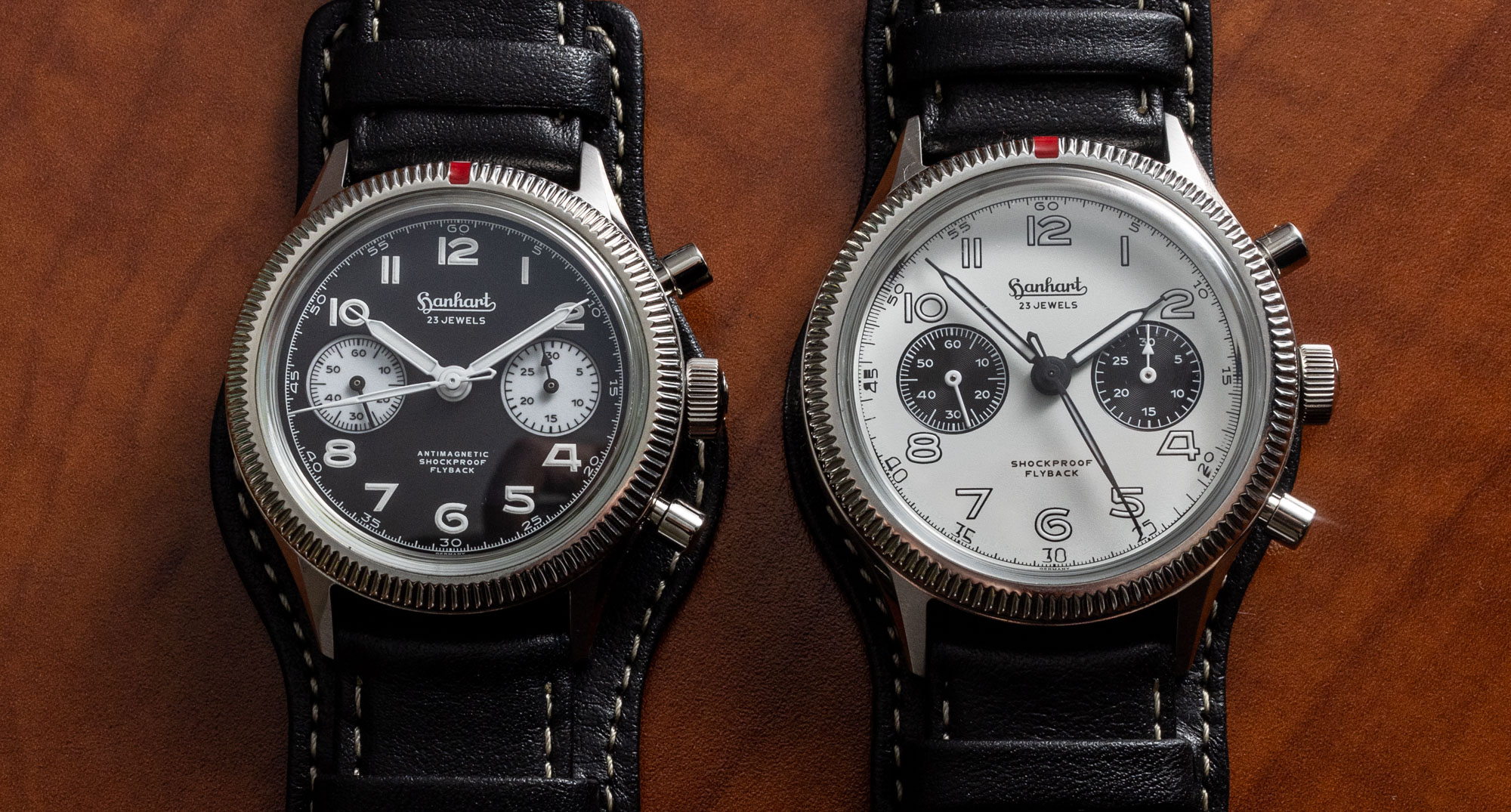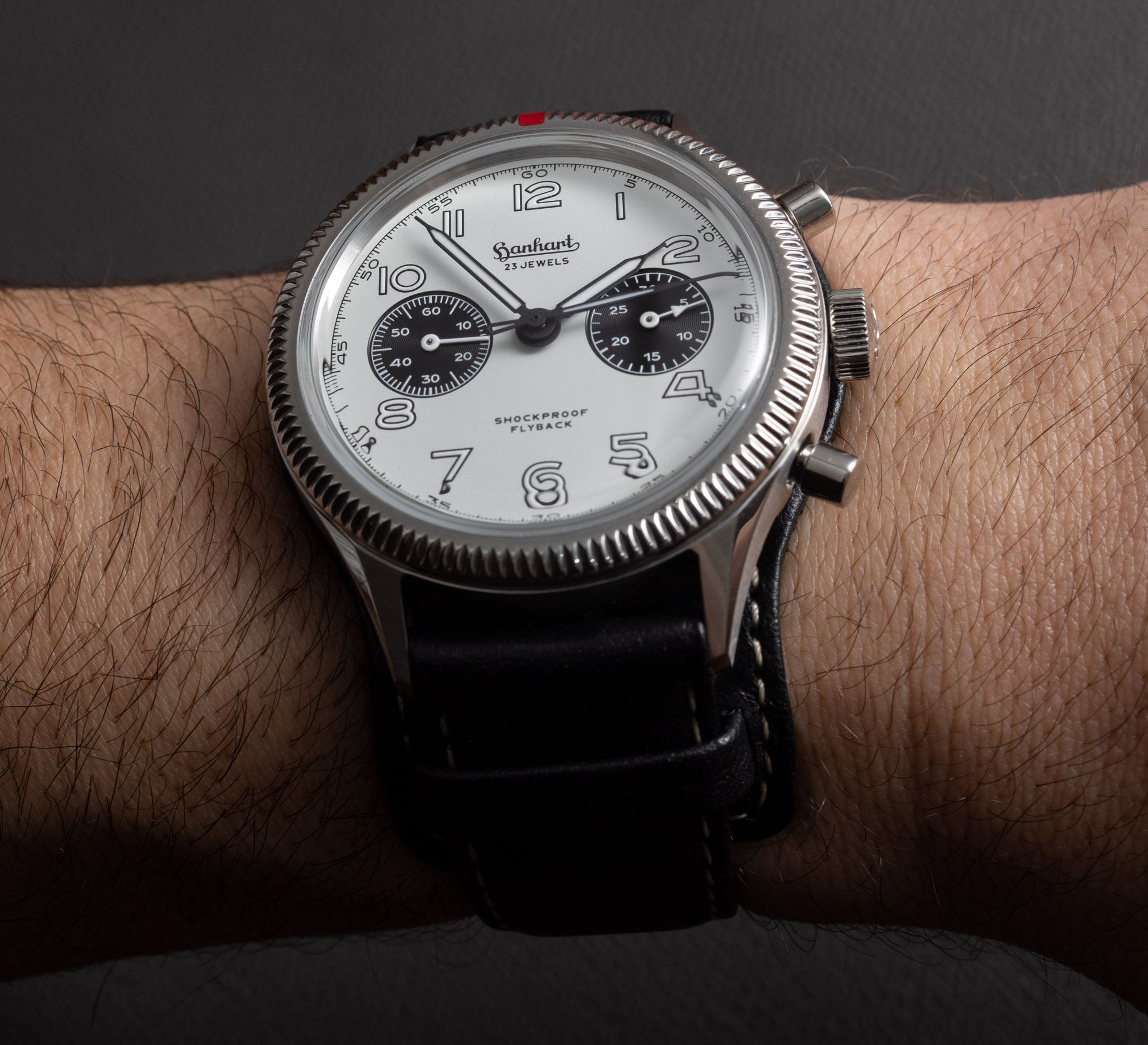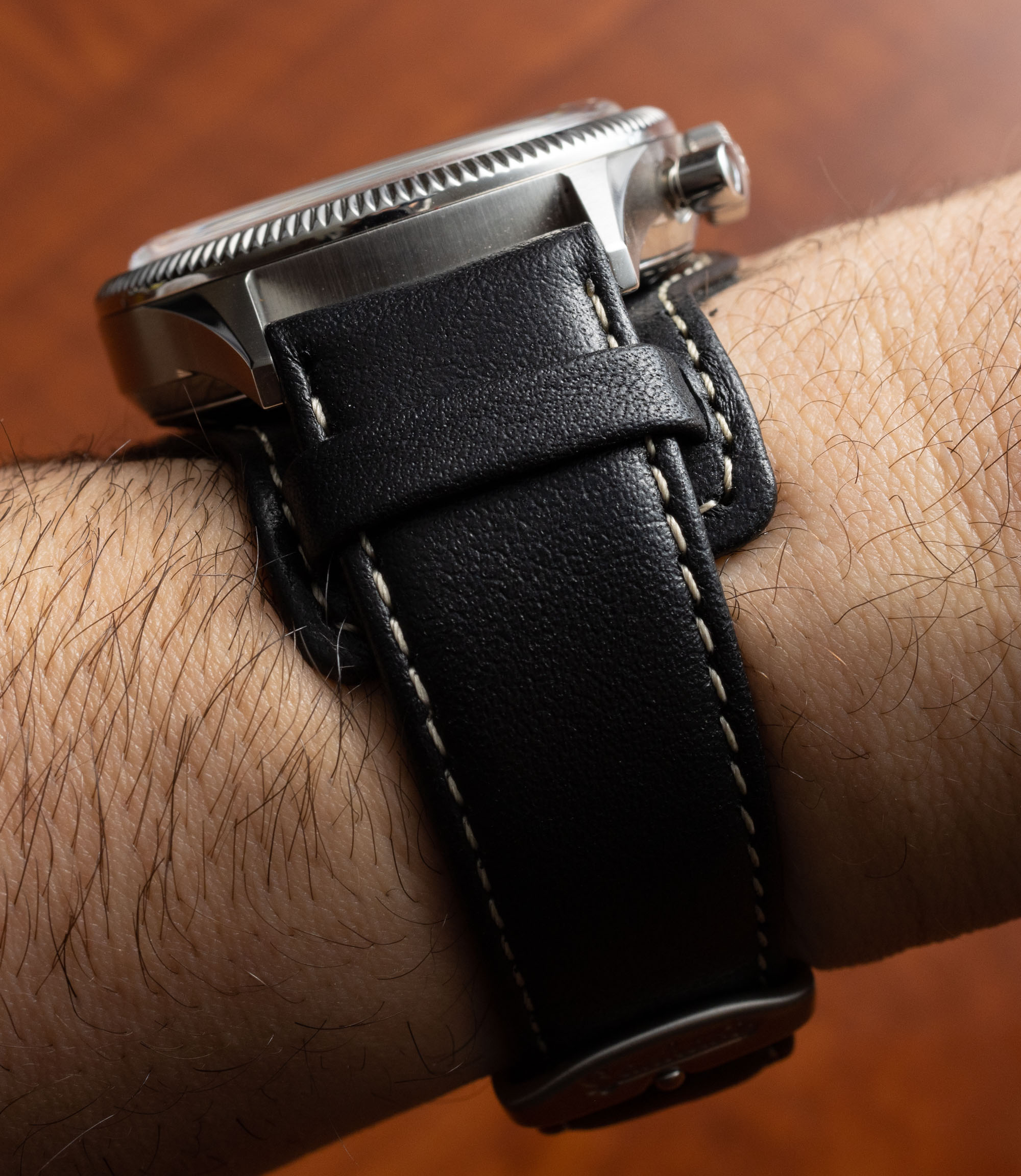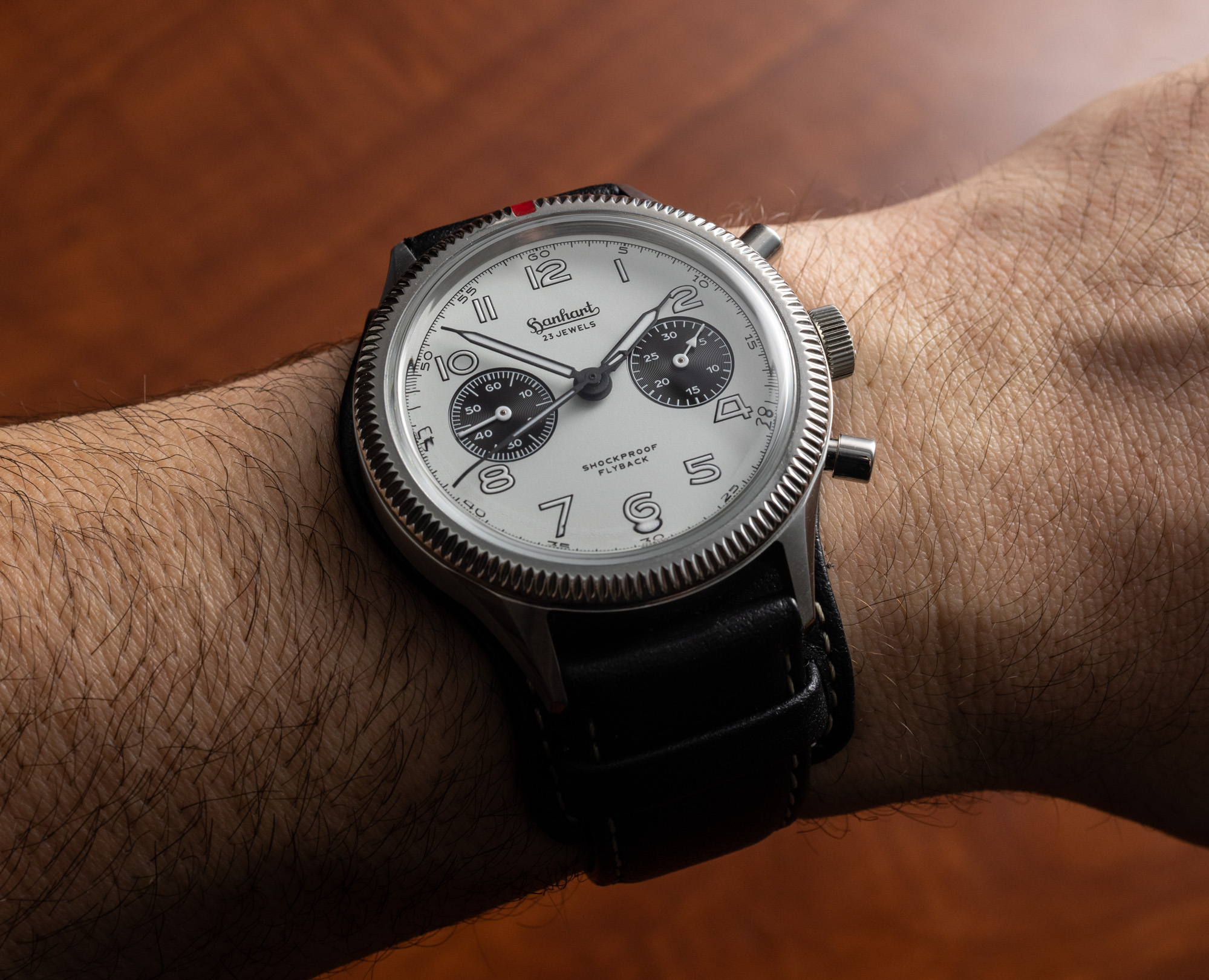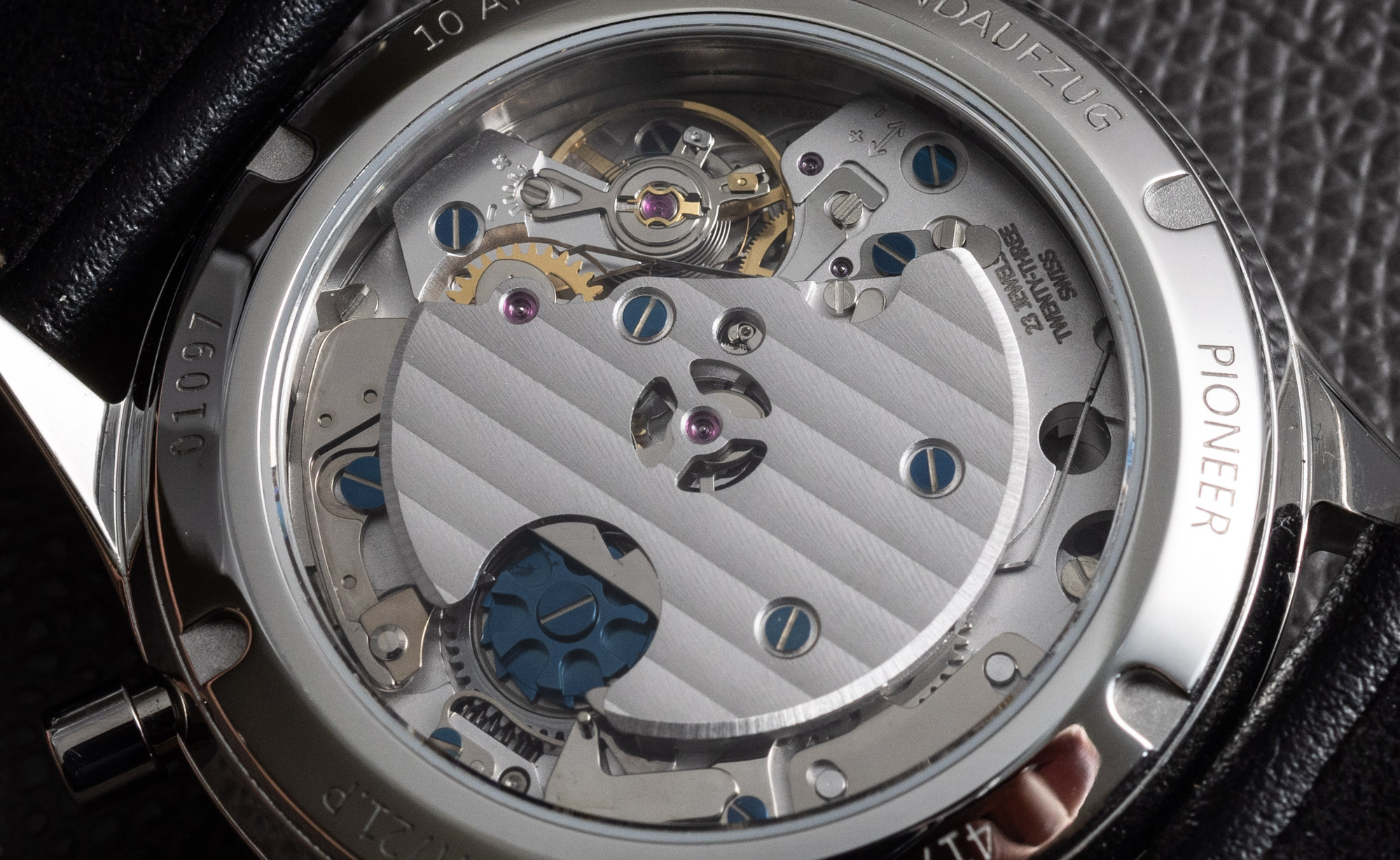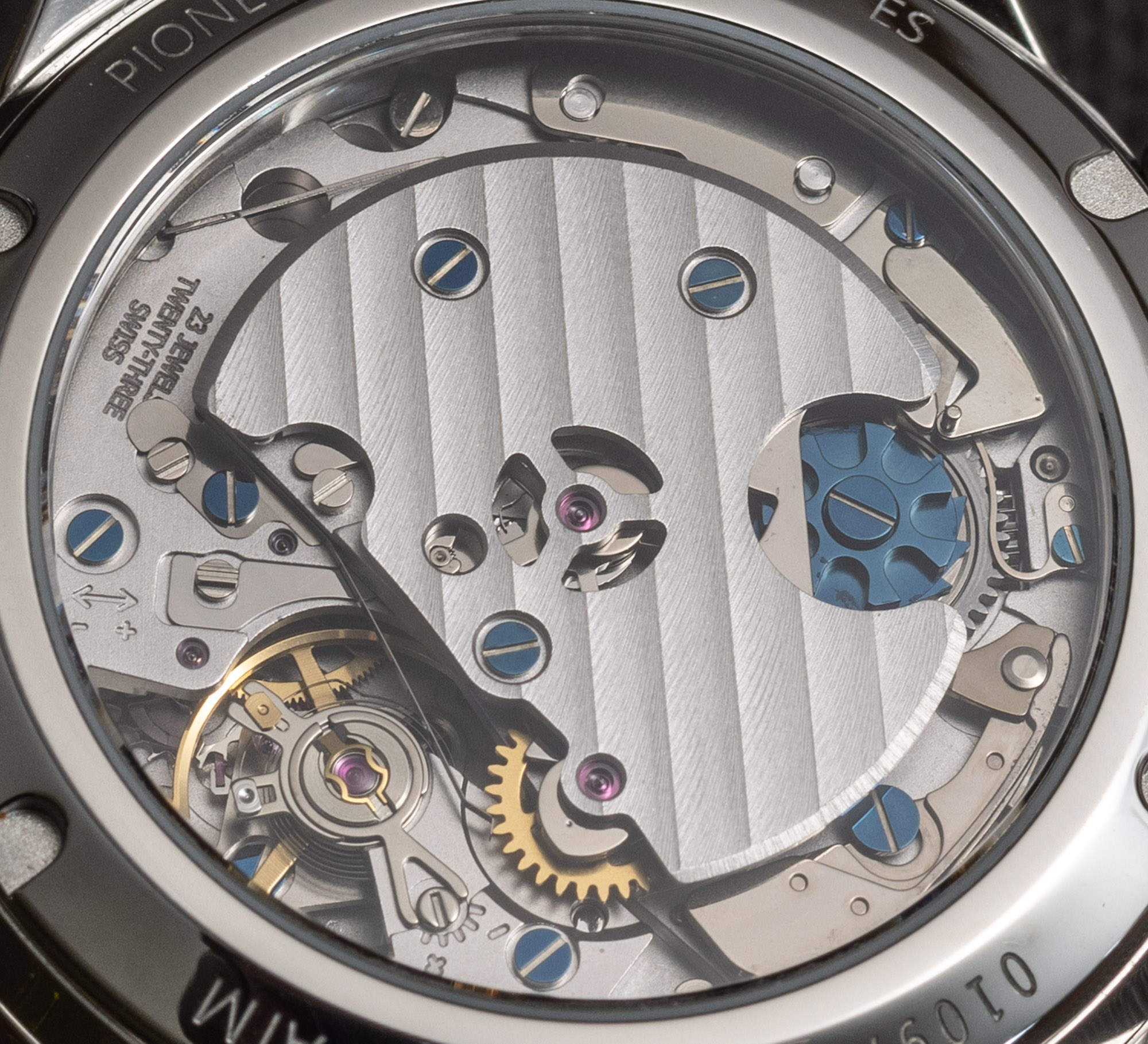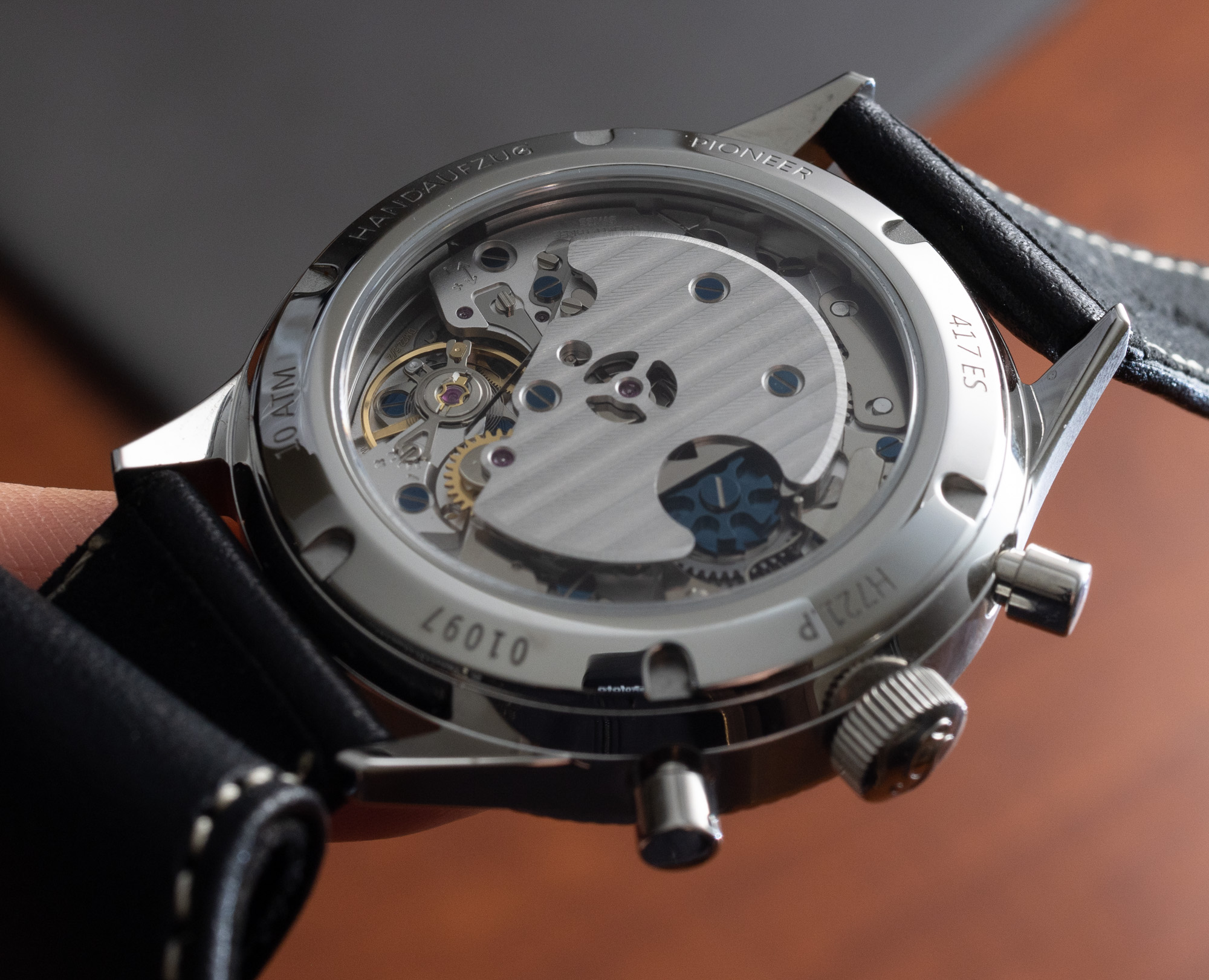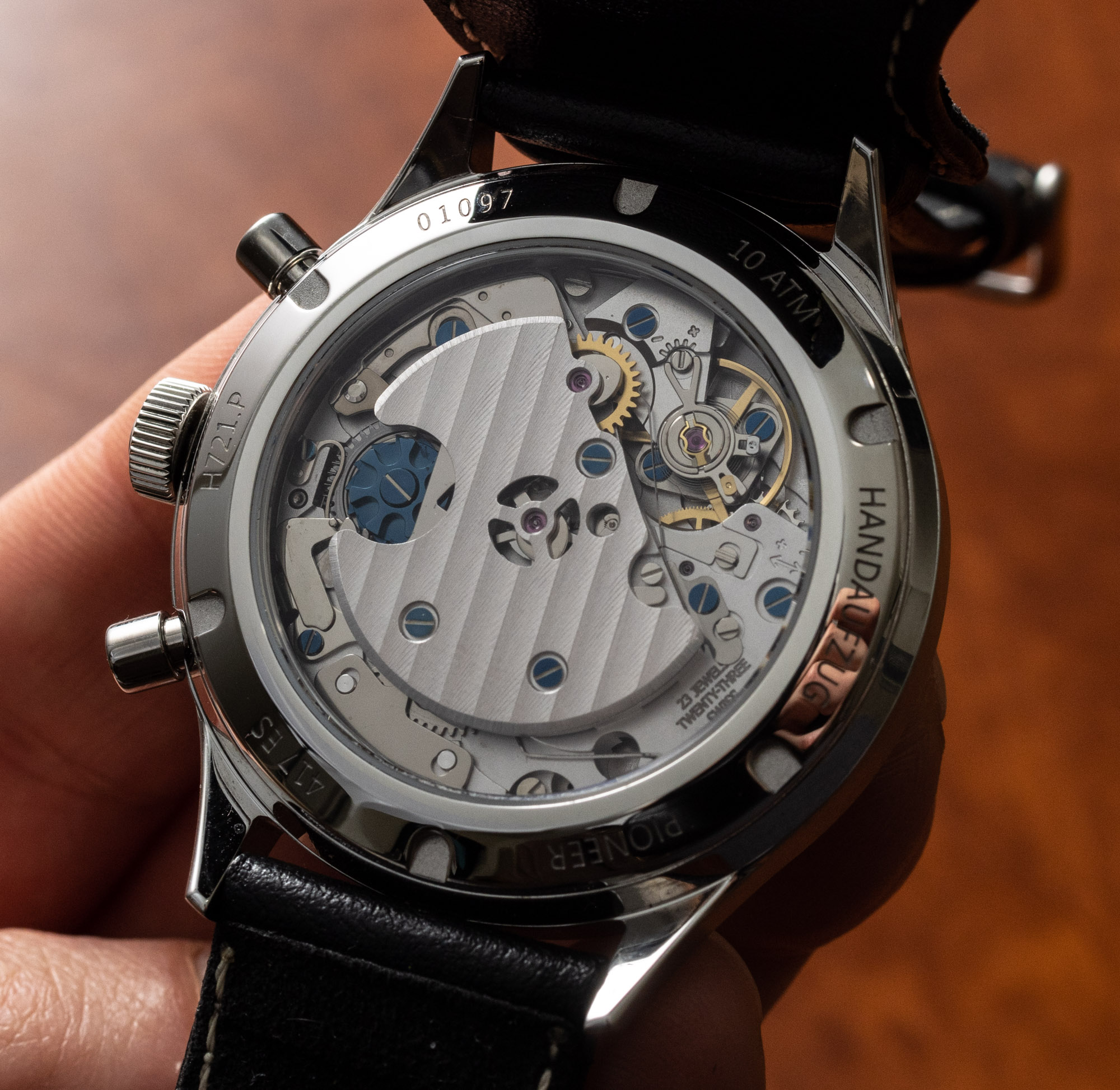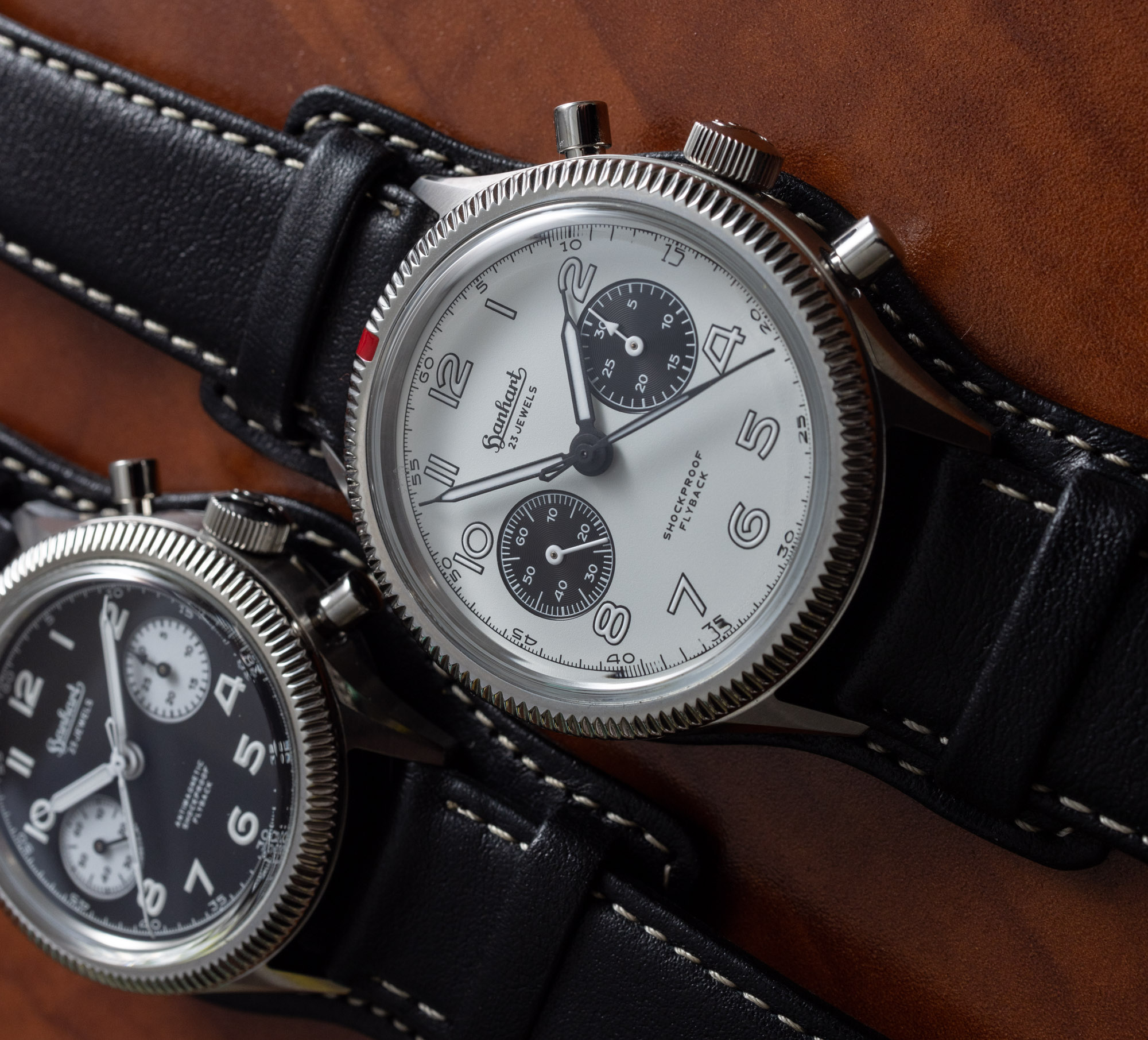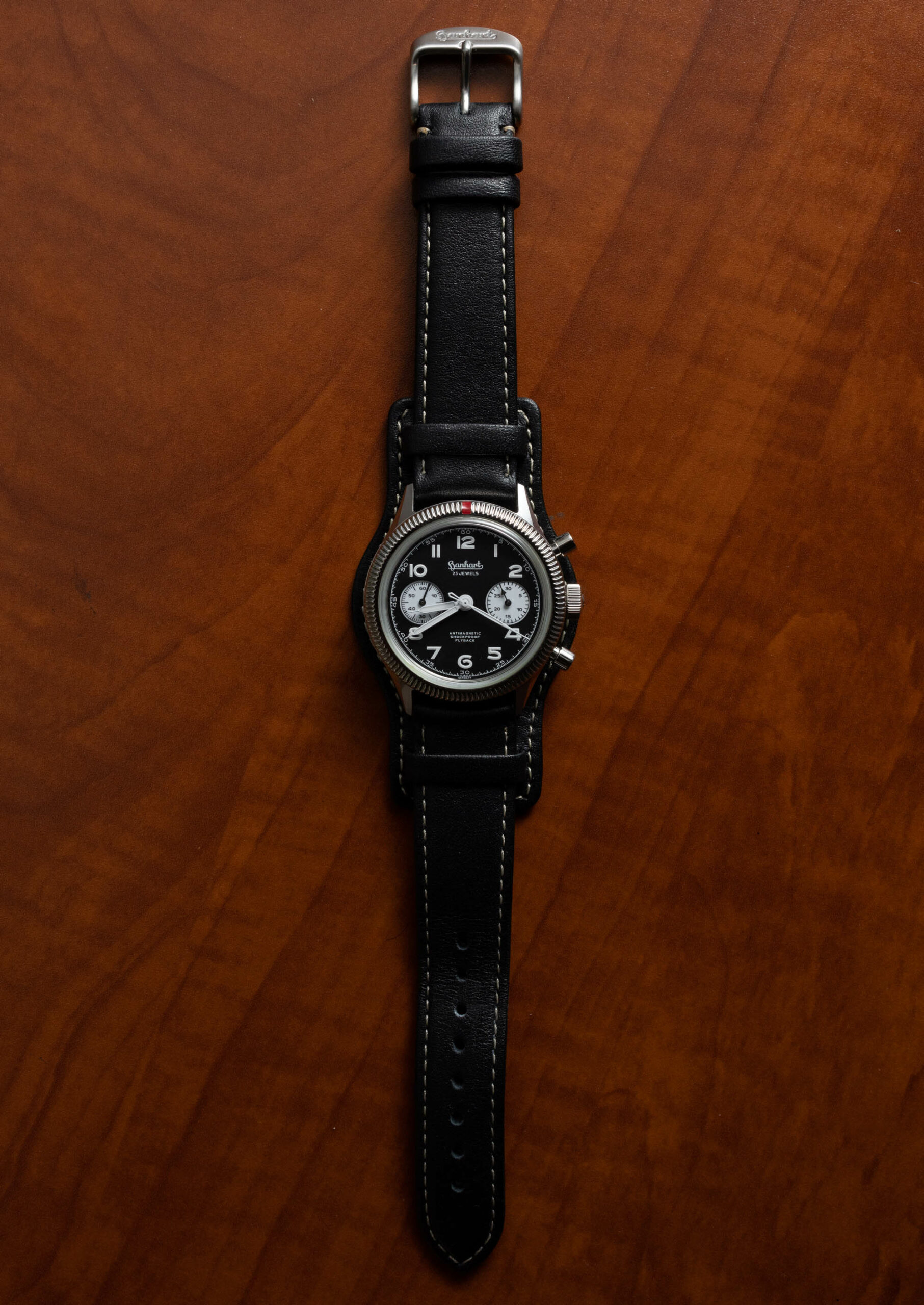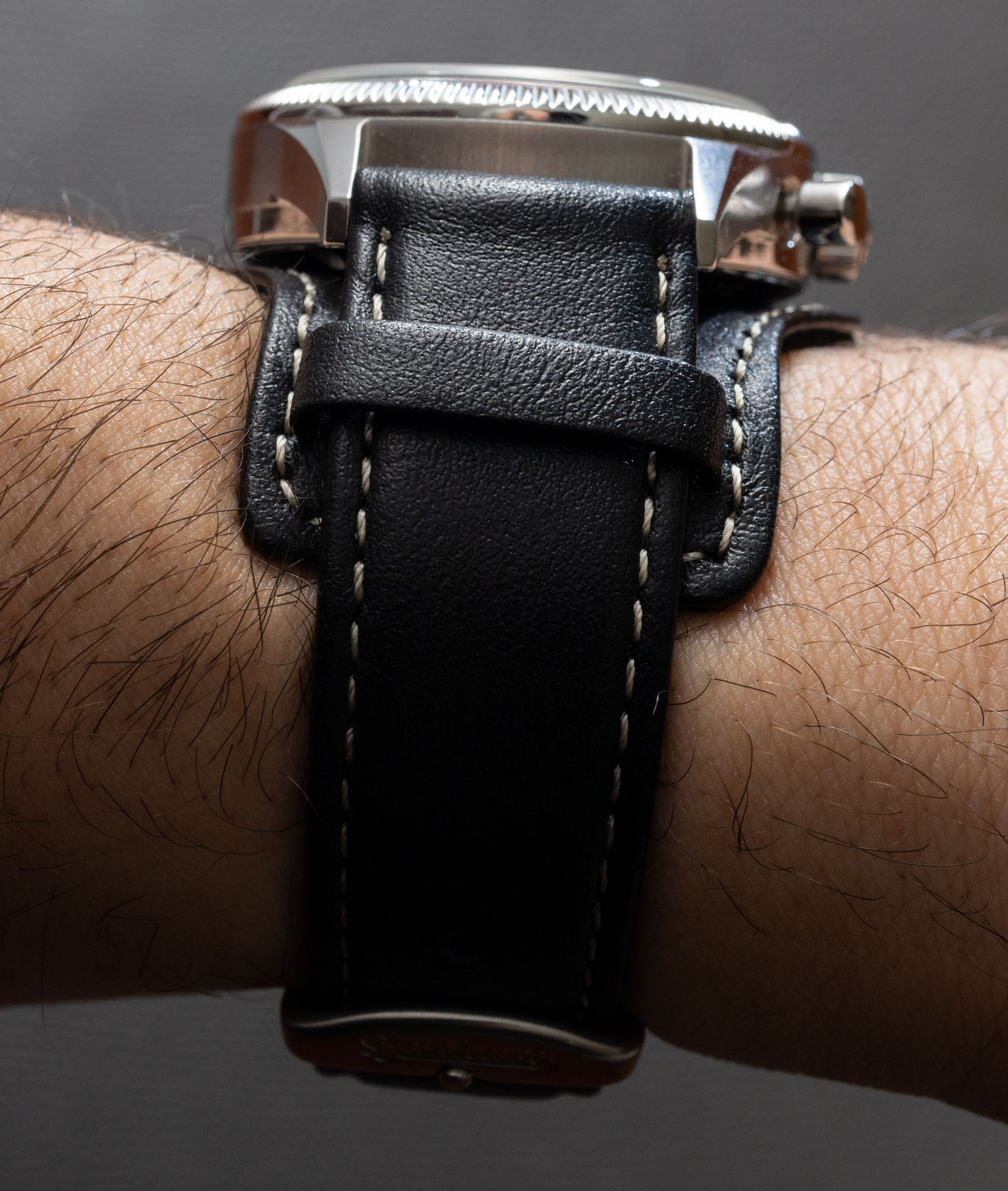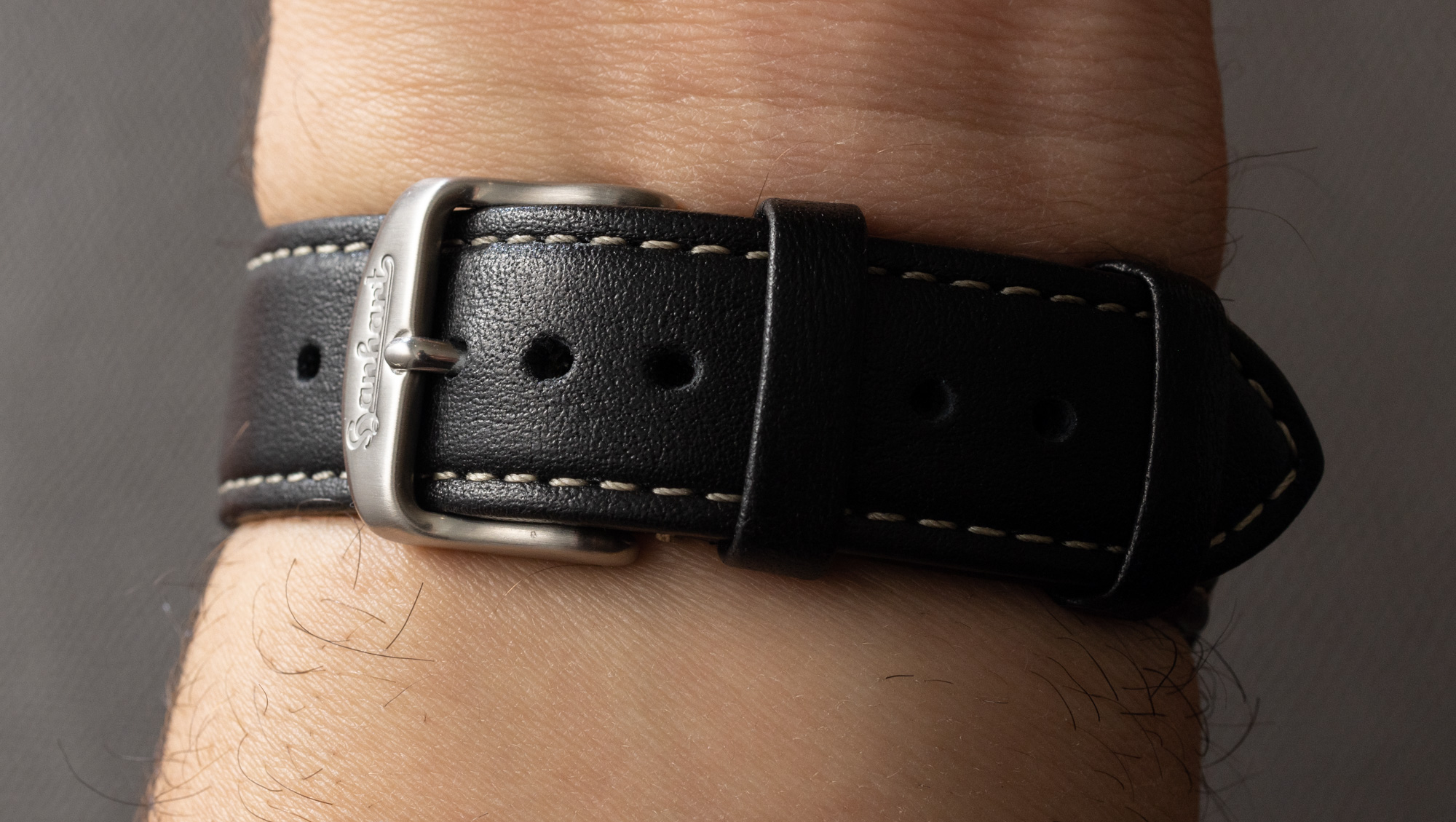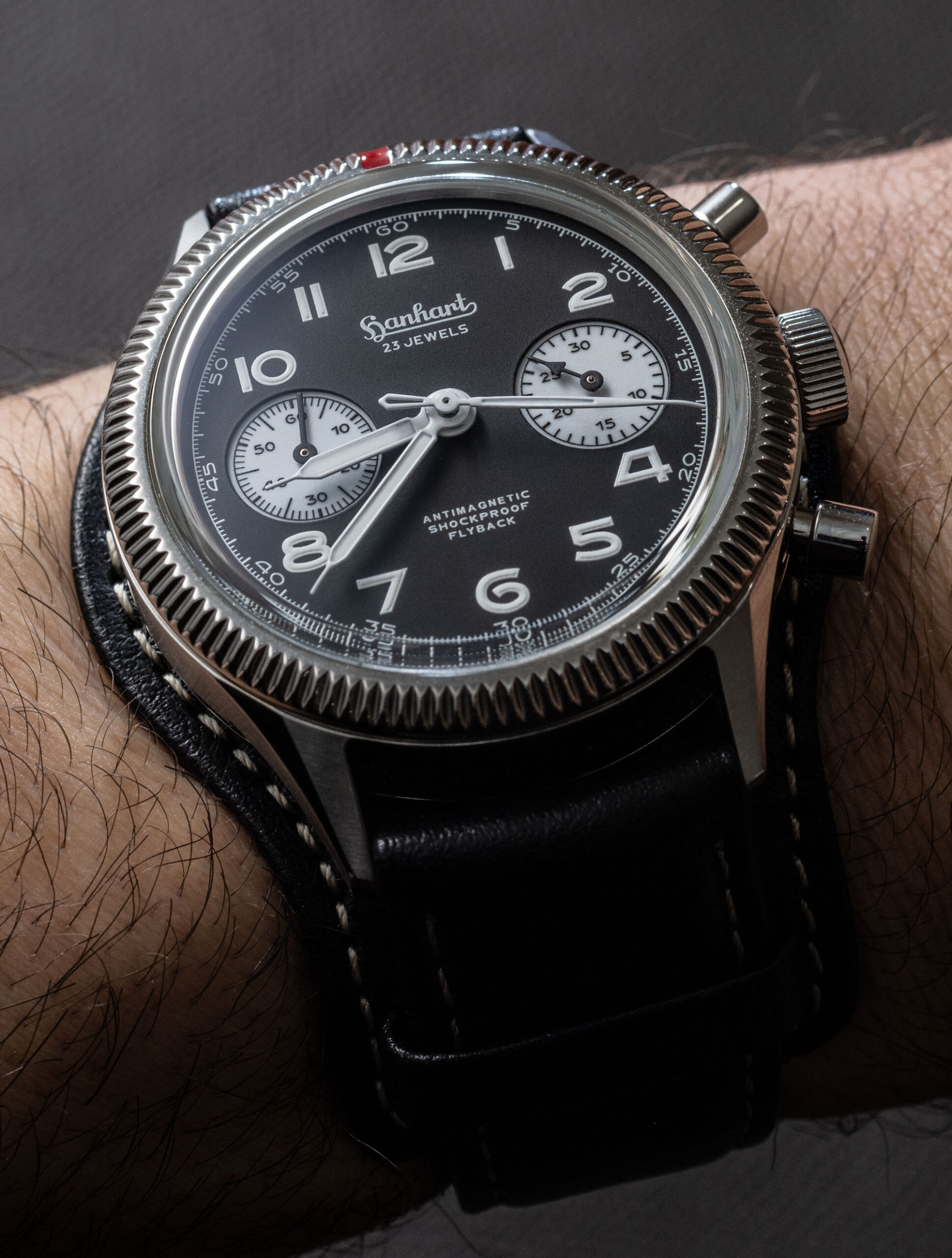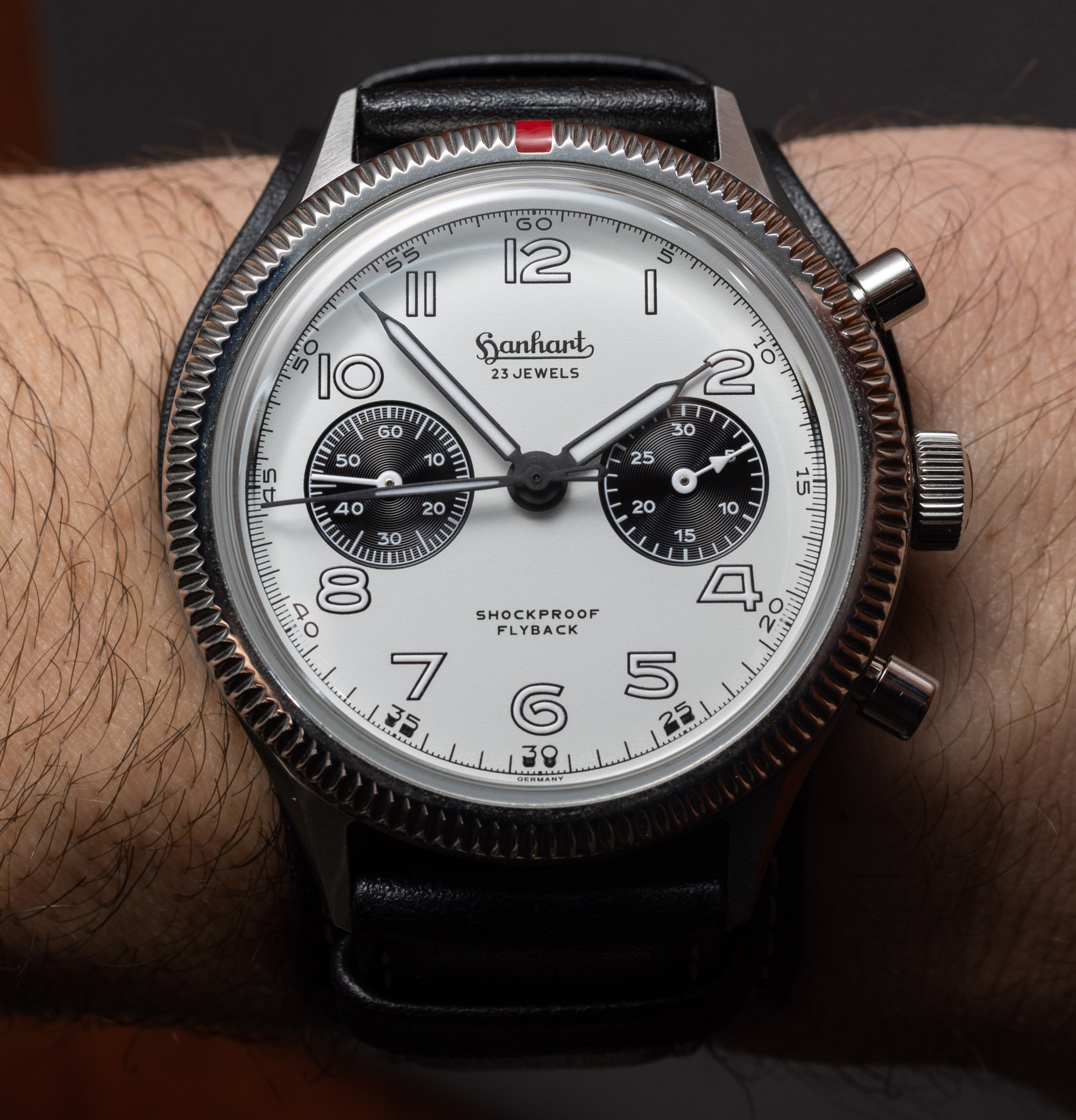
Not long ago, I wrote a review of the Hanhart 417 ES 1954 vintage-style pilot watch on aBlogtoWatch here. Based on an original 1954 military aviator watch the German company produced in the mid-20th century, the updated limited-production model was meant to be a relatively authentic homage to the original watches. They have been so popular that Hanhart has expanded this collection of vintage-inspired German pilot watches which, in my opinion, now strike an excellent blend of features, style, and price. Today, I want to look at the 39 and 42mm-wide versions of the Hanhart 414 ES Flyback timepieces, which are similar to the 417 ES 1954, with the principle difference being the inclusion of a flyback-enabled manually wound mechanical chronograph movement.
Right now, Hanhart produces the Pioneer 417 ES Flyback in either a 39mm or 42mm-wide case, and either with a “panda” (white face, black subdials) or a “reverse panda” (black face, white subdials) dial. In this hands-on article, I am wearing the Hanhart reference H701.211-7010-UB which is the Pioneer 417 ES 1954 Flyback Reverse Panda 39, as well as the larger Hanhart reference H721.201-7010-UB Pioneer 417 ES Flyback 42.
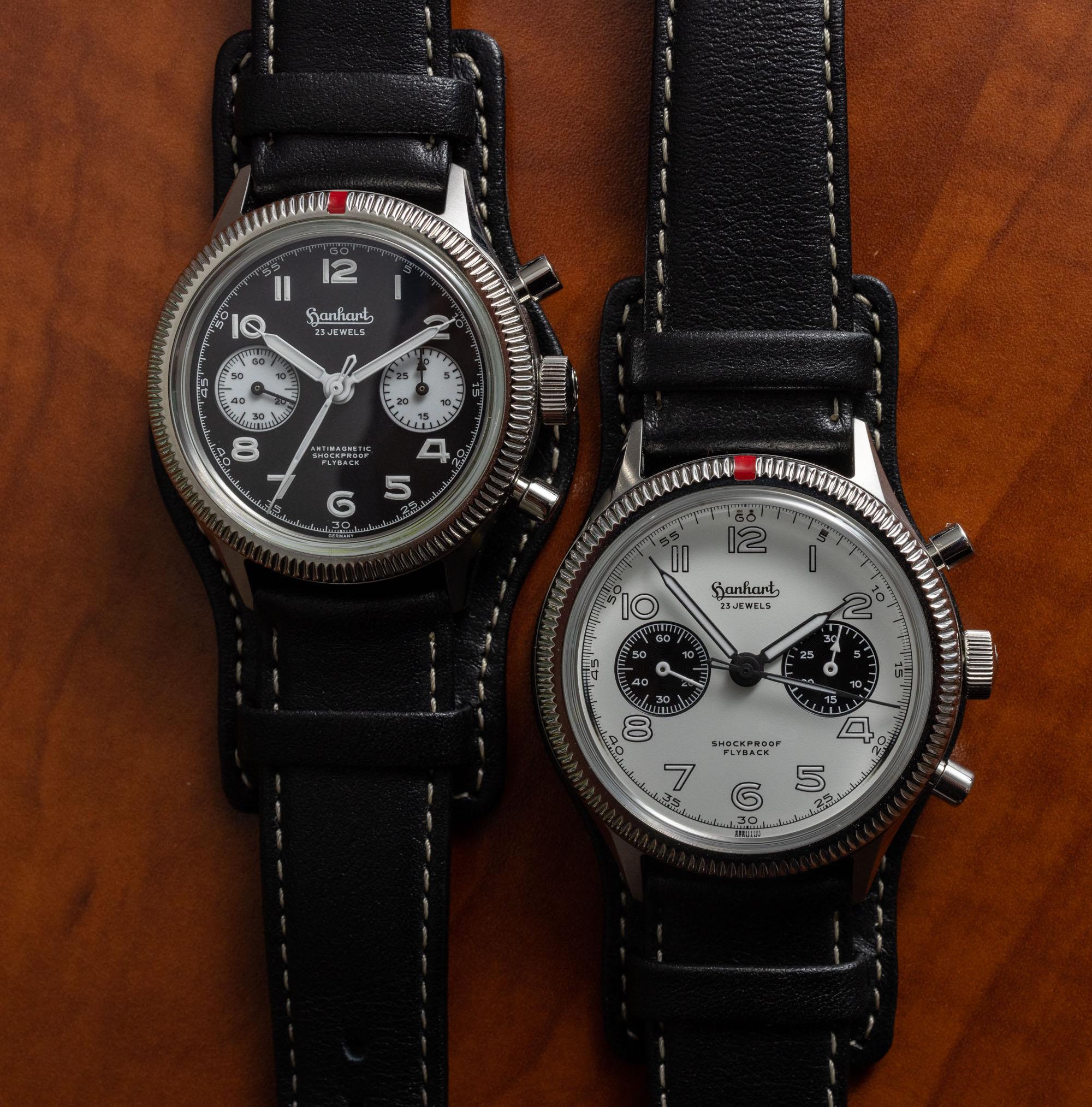
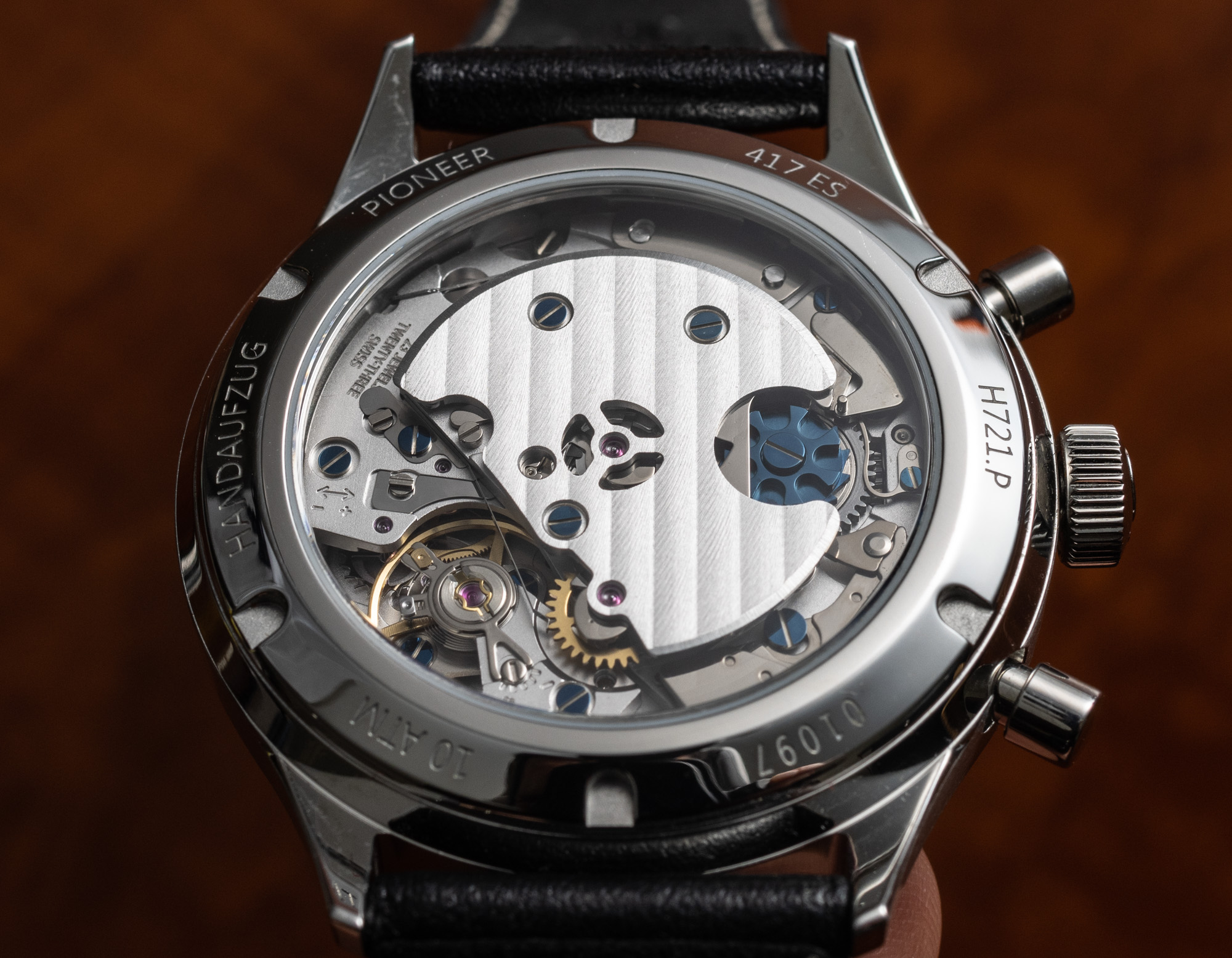
As you can see, the larger model is more contemporary in proportions but doesn’t have the “1954” designator. That said, as I mentioned in the previous article about the 417 ES 1954 with its 39mm-wide case, that smaller size is actually ideal for many of today’s wearers. How else do the watches differ aside from the name? I think that is an important question because the retail price for the 39mm-wide and the 42mm-wide 417 ES Flyback models is the same.
Other than the case diameter size, the only difference is the caseback. The 39mm-wide model has a much simpler steel caseback with a Hanhart logo in relief. The 42mm-wide model has a sapphire crystal display window showing off the manually wound mechanical movement. Note that both watches contain the same movement, which is produced by Swiss Sellita and “based on” its caliber AMT5100 M. The very elegant-looking manually wound movement features the time along with a 30-minute flyback (the stopwatch can be reset without first being stopped). The AMT5100 M movement operates at 4Hz (28,800 bpm) with about 58 hours of power reserve. Through the caseback of at least the 42mm-wide model, you can admire the decorative work on the movement, as well as the blue-toned column wheel transmission for the chronograph. One downside of the movement is that it is not very thick, which means that despite the removal of the automatic winding mechanism, the case of the 417 ES is still a bit thick at 13.3mm (with the box-style sapphire crystal).
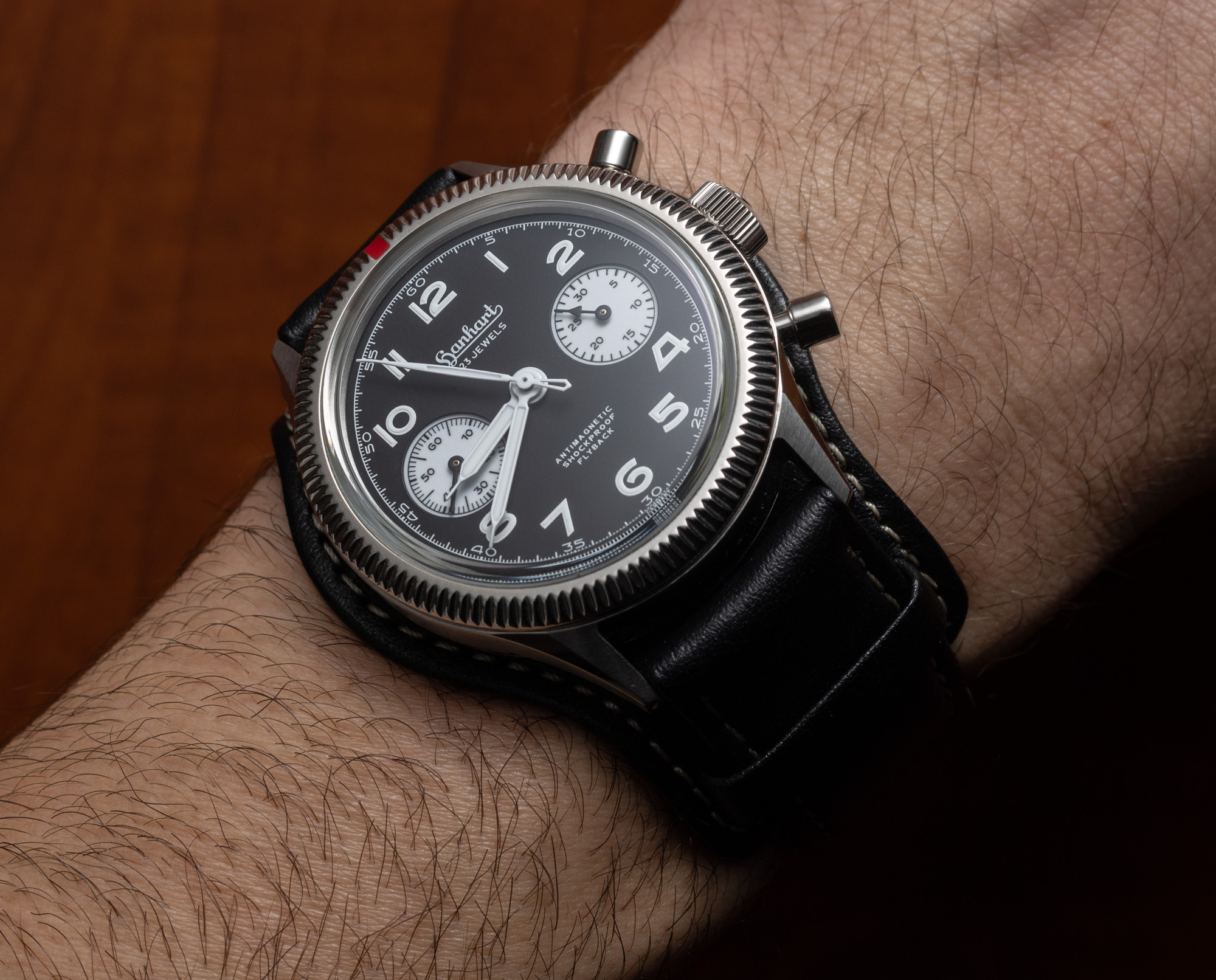
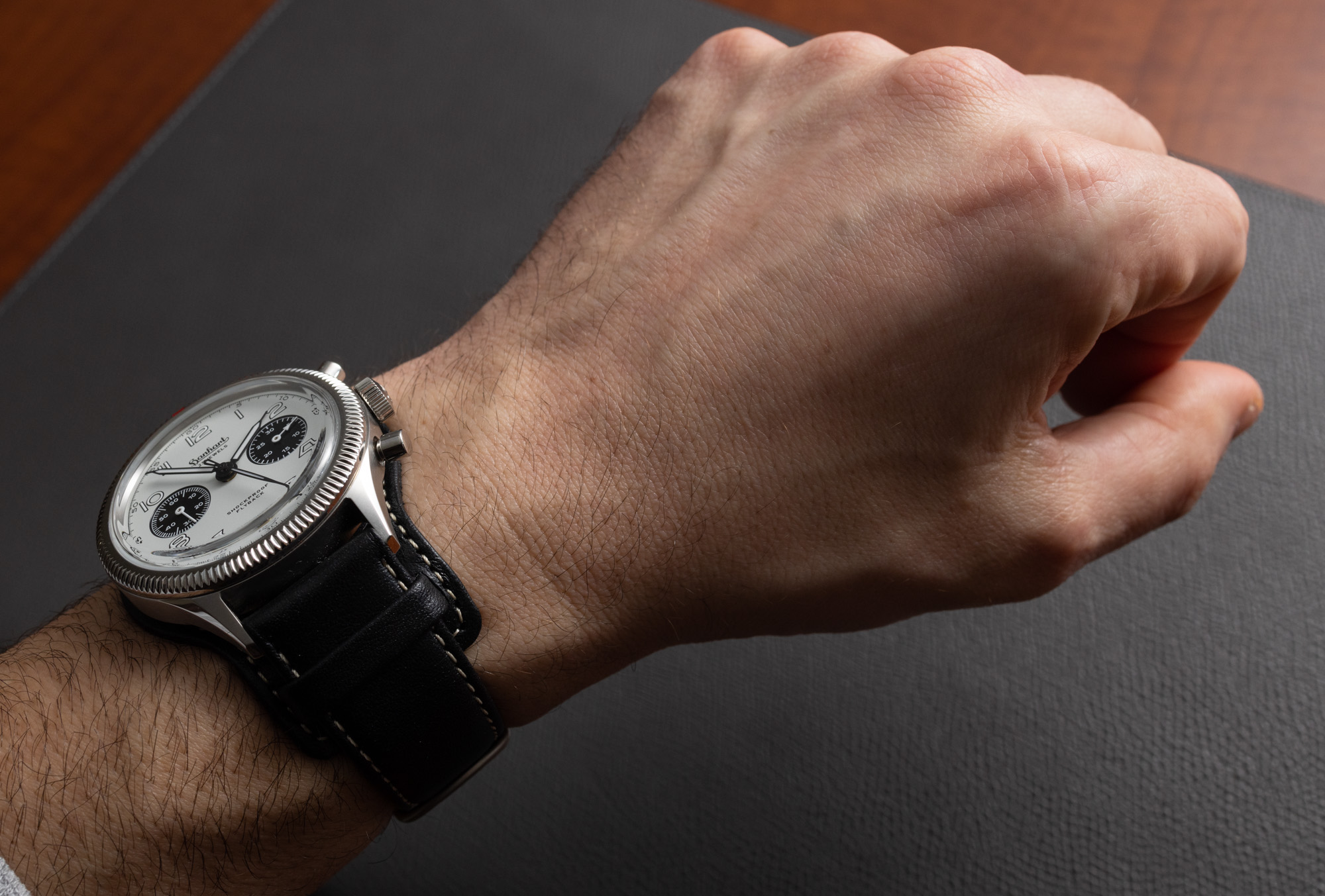
The steel cases are otherwise very well made in terms of polishing work and quality. The cases are water resistant to 100 meters (without the need for a screw-down crown, which would be annoying on a manually wound watch). The coined-style bezel has a single red marker on it and can spin freely to be used as a simple count-up or countdown timer. The dial itself has a slight bit of depth in the chronograph subdials, and, more importantly, has excellent legibility along with luminant paint for the hour Arabic numeral hour markers, as well as the hour and minute hands.
Another small difference between the 42mm and 39mm-wide models is anti-magnetic resistance. Which you prefer is really a matter of taste, as Hanhart charges the same for each watch. The smaller 39mm-wide model with the closed caseback has a case that has more iron in it and is more naturally anti-magnetic. This is also why it has a closed casedback, and on the dial, we have an “Anti-magnetic” label. The 42mm-wide version of the 417 ES Flyback does not have the label on the dial and instead eschews magnetic resistance for the visual splendor of the open caseback. Indeed, there are ways of having magnetic-resistant mechanical watches with a display caseback, but those watches involve mechanical movements that themselves are produced with non-ferrous parts (and that isn’t the case with most movements, including those produced by Swiss Made Sellita).
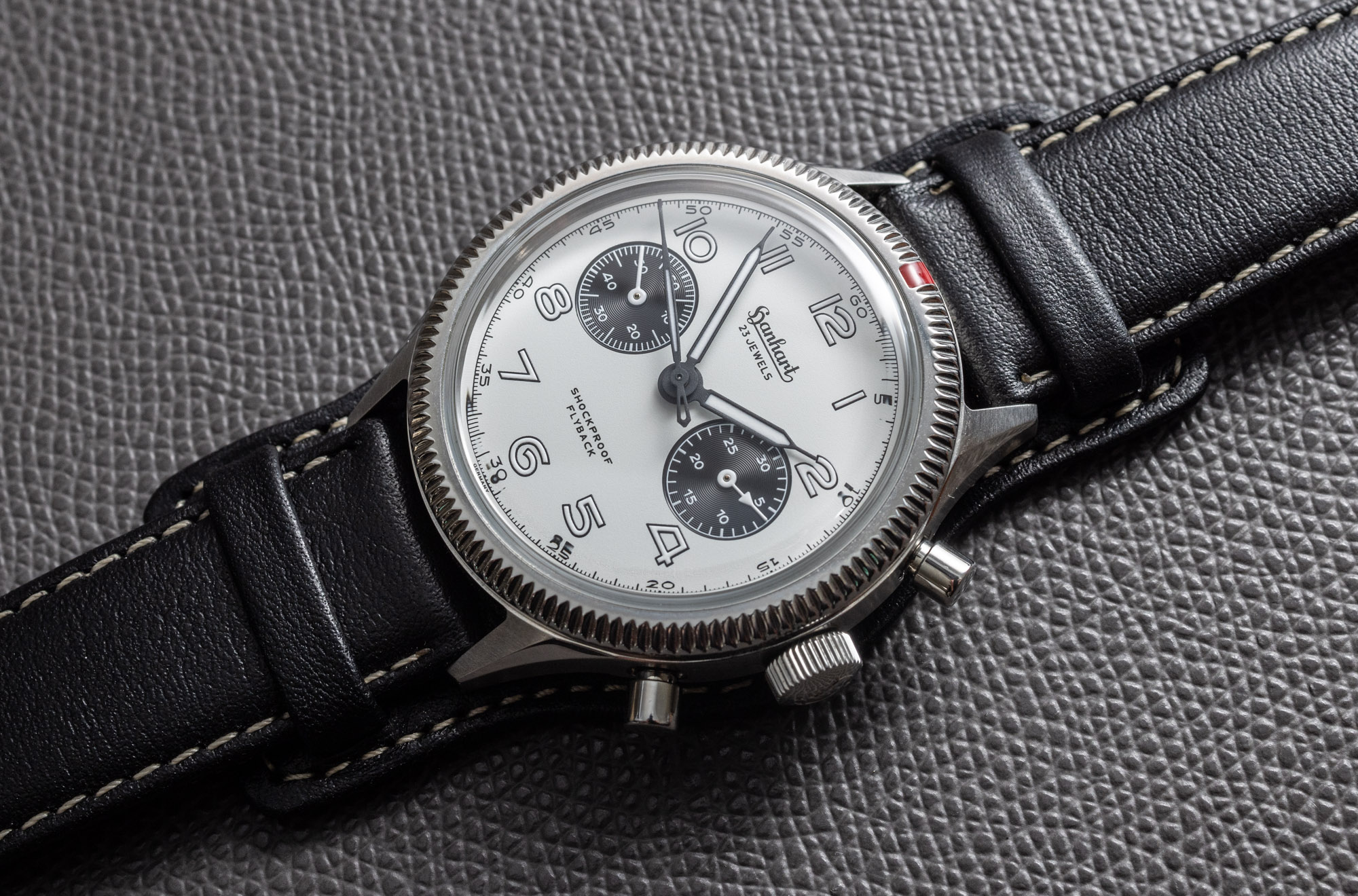
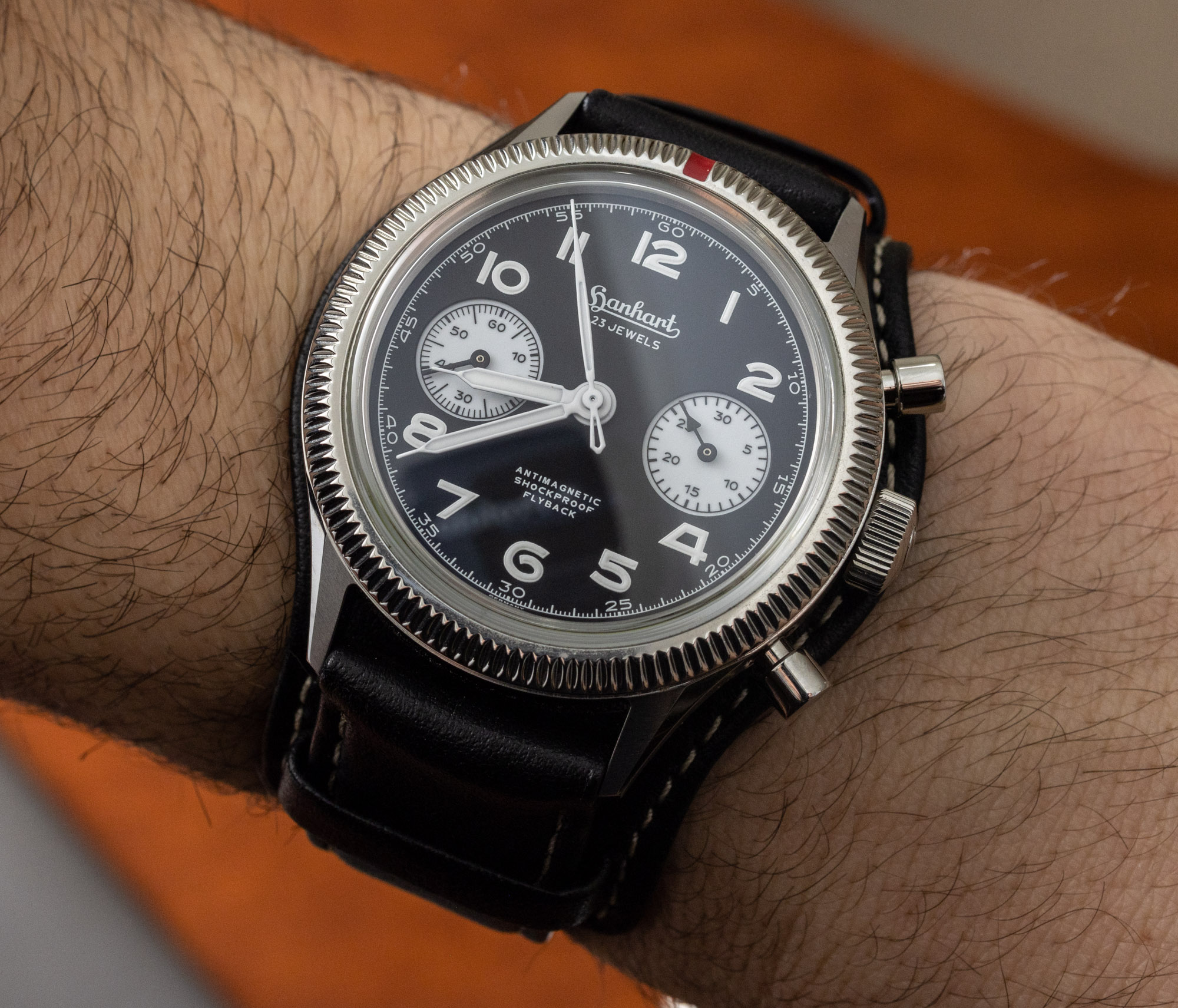
Hanhart offers the watches with a period-appropriate bund-style black leather strap with white contrast stitching. The “bund” portion is a removable round-style leather backing meant to fit with the strap over the caseback of the watch. Originally, these were used to prevent the cold metal of watch cases flying at high chilly altitudes from touching the skin of the wearer. Today bund-style straps are more a fashion decision, and personally, I think they look very cool. But they can easily be removed, and both the 39mm and 42mm-wide versions of the Pioneer 417 ES Flyback look handsome with or without the bund part of the leather strap.
While historically accurate as a manually wound watch, I think Hanhart would also have success with automatic winding versions of this attractive vintage-style sports watch. As I said in my previous review of the Pioneer 417 ES 1954, this particular “Type XX” style military aviator watch is still very handsome and popular, and the trick is to find one produced at a high quality, but not at a price that is totally silly. Hanhart not only has an excellent wristwatch product, but the prices for these watches are thoroughly fair and reasonable given their inherent value, as well as the price of competitor watches. Each of these Hanhart Pioneer 417 ES Flyback watches has a retail price of €2,390. Learn more at the Hanhart watches website here.

